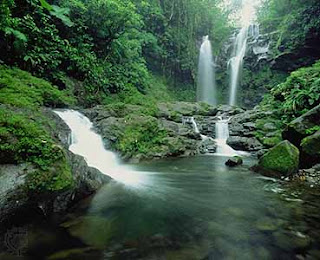Historical State:
Costa Rica, although a very small country, has an extremely high level of biodiversity. The country has 12,000 species of plants, 1,239 species of butterflies, 838 species of birds, 440 species of reptiles and amphibians, and 232 species of mammals. Costa Rica’s tropical rainforest possesses the highest biodiversity in Costa Rica of all biomes and is the most extended terrestrial environment in Costa Rica. The tropical rainforest exists due to high levels of rainfall, caused by its geographical location and global climatic conditions, such as the InterTropical Convergence Zone and Caribbean storms. However, it is also the biome that is most disturbed by human action. Costa Rica used to be almost completely covered by tropical rainforests, but Costa Rica has had a poor history of deforestation and cattle ranching. These two problems have reduced virgin forest to only 25% of its total area. In the early 1990s, Costa Rica had one of the worst deforestation rates in all of Latin America.
Human Impact:
As mentioned earlier, Costa Rica has had major deforestation problems in the past. This deforestation has typically been due to clearing for agriculture, especially coffee and bananas, and for cattle pastures. In the 1970s and early 1980s, a large amount of rainforest was converted into cattle land. When the United States stopped importing Central American beef, however, Costa Rica had giant stretches of rainforest destroyed for no reason. From 1990 to 1995, Costa Rica lost about 3% of its forests per year. All of this deforested wood is wasted by burning or rotting, so attempting to conserve or reforest these areas is basically a lost cause. Costa Rica’s extremely high deforestation rates have dropped significantly since the mid-1990s. However, illegal timber harvesting in protected land and clearing of land for agriculture and cattle pasture in unprotected areas is still a large threat. As a result of this, there has been major soil erosion and loss of soil fertility. Also, the country uses more pesticides than all other nations in Central America combined. All of these pesticides have significantly contaminated Costa Rican soil.
Future Prospects:
The future is actually extremely bright for Costa Rican rainforests. The country has made significant efforts to protect its ecosystems, and even won the 2010 Future Policy award at a global summit on biodiversity in Nagoya, Japan. Also, the country may soon become the first developing country to meet UN biodiversity commitments. Costa Rica pays for nature reserve management and environmental services, like clean air, fresh water, and biodiversity protection through fuel taxes, car stamp duty, and energy fees. The government also pays landowners to preserve old-growth forests and plant new trees. Around two-thirds of remaining Costa Rican rainforests are currently protected. Several programs have been implemented to promote sustainable development and eco-tourism has become a very important source of revenue for funding national forests and landowners. Besides eco-tourism and taxes, the country is trying to seek money from developing countries. In 2005, Costa Rica joined a coalition of tropical developing countries that proposed a "rainforest conservation for emissions" deal at the December United Nations summit on climate change in Montreal. This deal is supposed to compensate tropical developing countries for conservation efforts. This program is meant to add to an old program that protected rainforest by selling allowances to emit greenhouses gases. In 1999, the program generated around $20 million. From 2000 to 2005, the annual deforestation rate was only 0.1%, compared to 3% from 1990 to 1995, so considerable improvements have been made.
How can we further improve?
As Professor Gillespie says, the best way to help is travel to the country. In Costa Rica, this is especially true because of the strong eco-tourism industry. Eco-tourism has been a major reason for Costa Rica’s significant improvements in conservation efforts, becoming one of the country’s greatest sources of revenue .The country has incredible biodiversity, a very accessible and developed parks system, and is safer than surrounding countries. However, this tourism can end up being harmful if not controlled. Tourism is an extremely booming industry in Costa Rica, and the building of hotels has been controversial in regards to the environment. However, Costa Rica may be the overall leader of environmental protection out of developing countries and sets a great example that other nations should follow.
Sources:
"Costa Rica: Environmental Profile." Mongabay.com. 7 Feb. 2006. Web. 30 Nov. 2011. <http://rainforests.mongabay.com/20costarica.htm>.
"Do Costa Rica's Ecosystem Payments Work?" Conservation and Environmental Science News. Mongabay.com, 17 Sept. 2007. Web. 30 Nov. 2011. <http://news.mongabay.com/2007/0917-cr.html>.
"Environment - Costa Rica - Problem, Average, Area, Crops, Farming, System."Encyclopedia of the Nations - Information about Countries of the World, United Nations, and World Leaders. Web. 30 Nov. 2011. <http://www.nationsencyclopedia.com/Americas/Costa-Rica-ENVIRONMENT.html>.
Watts, Jonathan. "Costa Rica Recognised for Biodiversity Protection | Environment | Guardian.co.uk." Guardian.co.uk. The Guardian, 25 Oct. 2010. Web. 30 Nov. 2011. <http://www.guardian.co.uk/environment/2010/oct/25/costa-rica-biodiversity>.



No comments:
Post a Comment